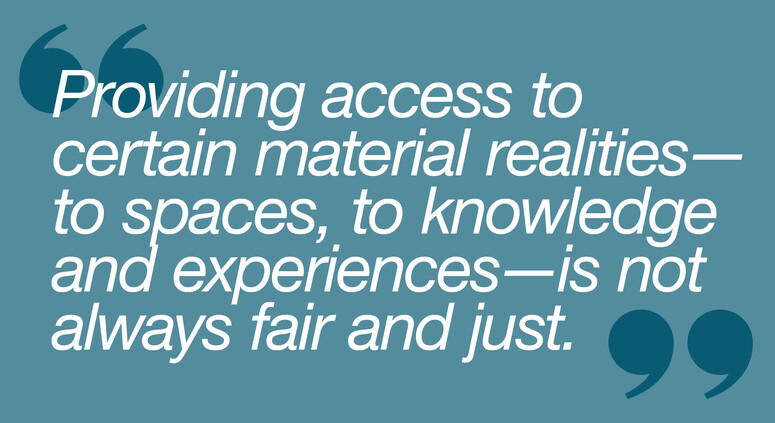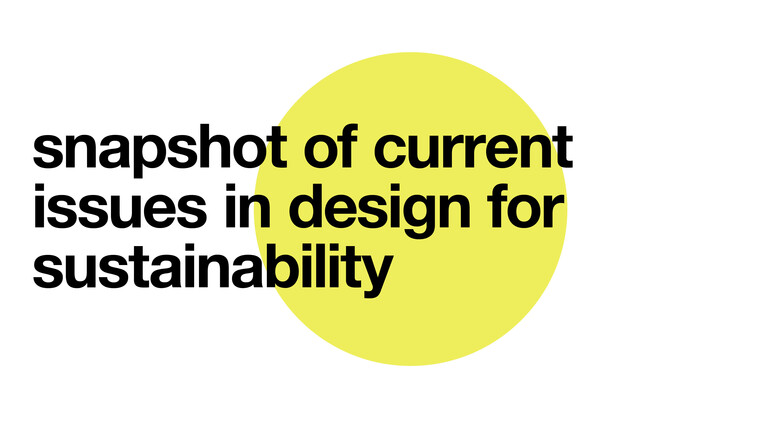the complicated ethics of design awards

20.07.2020 Editorial
As much as there are ‘good’ and ‘bad’ designs, so there are Design Awards that contribute to the greater good of the design community and those who detract from it. Design Awards provide a forum to show the value of professional capacities; showcasing much-needed success cases for the design sector to promote design. The trouble is, too many Design Awards miss the mark.
To address a changing design landscape, the International Council of Design supports Design Awards that elevate the quality of design, while recognising a need to ‘beware’ of Design Awards that are self-serving, and even ‘predatory’ towards designers. We uphold that it is critical that Design Awards step up and invest in recognising professional work rather than focusing on ‘desirable’ designs.
The proliferation of Design Awards around the world is a reflection of two contributing factors. First, design professionals seek to demonstrate legitimacy and quantify the quality of their skills in order to compete for work. Second, organisations tasked with the promotion of design and designers seek examples of good design to demonstrate design value, to promote the skill of the designers they represent, and to elevate the understanding of design. In this way, Design Awards can serve both design practitioners and the organising body initiating the Award.
Many existing Design Awards are of high quality and provide important support for promoting design. To mention just a few: the ’s ‘Annual Award’ in graphic design, the Industrial Designers Society of America’s ‘International Design Excellence Awards (IDEA)’ in industrial design, the ‘Good Design"award and ’s ‘Good Design Award (G-Mark)’ all provide international benchmarks. There are many other worthy Design Awards at the regional, national and international levels.
The variety and ubiquity of design schemes elevate the need for Awards to raise their standards in order to distinguish themselves. The recognition of professionalism — in all its complexity — offers a much more robust model for comparison and therefore an avenue for Awards to gain in reputation and depth.
RECOGNISING DESIGN PROFESSIONALISM
The Council maintains that professionalism in design is a combination of a commitment to a high standard of practice and integrity, while also addressing the long-term impact of designs on users and the public. Designs have enormous impact on society and on our planet, often far beyond the intentions and reach of a particular product or message. A good design contributes value. A poorly conceived design causes damage. Designers must assume the responsibility to follow their professional methodology and take into account all the ways in which their designs will impact not only the user but also the wider society as well as the planet. For design to be considered ‘good’ it must consider the aspects of social equity, cultural diversity, economic viability and environmental sustainability as integral parts of the solution. In truth, only a small percentage of designs can accurately be described as meeting all these criteria. In other words, ‘good design’ is rare.
It can be very tempting to focus on designs: the artefacts resulting from designing, the ‘objects’, ‘solutions’, ‘collaborations’ ‘systems’ and even ‘concepts’ produced by designing. Setting up criteria that compares designs through formal or aesthetic considerations is straightforward and can be done relatively easily, often through comparing images of finished work. Recognising professionalism implies a focus on the designing, the structured design process behind the designs. This can be considerably more difficult as a much deeper understanding of the problem, the brief, and the process, are necessary in order to compare. The result is more robust as it truly prizes quality design work over showy or visually interesting (but perhaps less effective) work. It is this aspect that truly demonstrates the value of the design. Making the abstract designing process apparent and understandable to business, government and the public is key to unlocking the potential of design, as well as promoting acceptance of designing as a profession.
Achieving this high standard requires far more substance and rigor in terms of submission formats, criteria, jury composition and processes, and in eventual communications (and exhibition). Describing, evaluating and eventually communicating the details of an abstract process is very difficult, and time- and resource-intensive, requiring a complicated effort to describe and evaluate objectives and processes through comparison of hard-to-collect-and-compare data and results.
An example of a very effective award program recognising excellence in process is the Pritzker Architecture Prize. The Pritzker is awarded for a body of work through a very selective process including a particularly sophisticated jury. The process is long and intense. The Pritzker recognises one architect every year, and it includes a financial award. Far outweighing the financial component, however, is the ‘brand’ value of the Pritzker Prize name, sometimes called the ‘Nobel Prize’ of architecture. This brand has been forged over forty years of careful attention to detail, and a rigorous process. That process requires very substantial resources, but the impact is meaningful.
THE ETHICS OF DESIGN AWARD SCHEMES
Inflated Numbers, Exorbitant Prizes and Hidden Fees
Some Awards choose to structure their submissions process in such a way to encourage a very large numbers of entries,. This can be done by allowing unlimited numbers of submissions by individual designers or by eliminating the submission fee. One can infer that this is done to inflate the number of participants, in the belief that large numbers of entries are an indicator of success. In terms of Awards, quality is more important than quantity. We contend that a high number of low-quality submissions is a problem. No Jury can effectively evaluate thousands of submissions, forcing large numbers of submissions to be eliminated in the Pre-selection stages. Such situations contribute to processes of questionable value and place unacceptable pressures on the Jury. This undermines the integrity of the award and eventually damages the brand.
A recent development has been the introduction of substantial monetary components to Awards — sometimes enormous amounts. In itself this is not problematic; designers deserve to be as well-rewarded for their professional work as anyone else. If this comes at the expense of other — vital — elements of the process, this can be damaging and counterproductive. It takes an important financial investment to put in place a solid Award.
Additionally, this practice can create unintended consequences when the amounts promised are so large that it is financially worthwhile for a design studio to devise a design specifically tailored to win that prize. This in fact promotes the creation of mock-ups — judged for their aesthetic — over actual design work that must take into account real-world parameters. Large cash prizes sometimes reflect competition between Design Awards themselves — those who equate recruiting higher numbers of submissions with greater success — rather than at fostering design excellence.
Some very high-profile Award schemes, though described as ‘non-profit’, in fact seem to operate on the principle of revenue-generation. Not only do these Award schemes charge substantial first-stage registration fees, but, in order to advance to subsequent rounds and eventually receive an award, participants are obligated to pay very large sums for ‘benefits packages’. In effect, winners pay a penalty for ‘winning’. Regrettably, these fees often come as a surprise to designers as they may be difficult to decipher from the initial registration agreements.
This practice raises many troublesome issues. The first obvious issue is that participation is limited to those who can afford the high costs — often termed 'pay for play’. It is not by chance that many of the submissions come from the companies behind the products rather than the designers. Whereas companies can expense these costs as merchandising expenses paid from hefty corporate advertising budgets, designers — including the good designers who might have won otherwise — do not have comparable budgets. Perhaps more disturbing is the potential for conflict of interest. The opportunity to increase revenue is an incentive to increase the number of submissions – and especially the number and percentage of ‘winners’ – at the expense of recognising excellence.
To counteract this, the Organiser must put in place a thorough Jury selection process, draft adequate rules, think out a submissions process, determine a fair and unbiased evaluation process, devise a system for evaluating the work itself (rather than simply a images of the work) and ensure that the submissions are treated ensuring the respect of intellectual property rights and professional ethics. These elements will truly impact the quality of the Award. It is rare to have funding to both structures and invest in these elements and have enough left over for a substantial prize.
‘Rankings’
Some Award schemes utilise self-proclaimed ‘rankings’ as an advertising ploy to increase submissions. Rankings are big business, whether it is classifying university programmes, pitting countries against each other or suggesting ‘top ten’ style lists.
Design is a hard thing to classify and these rankings provide an illusion of a ‘quantitative’ measure of success. Some awards schemes have cynically discovered that they can capitalise on this by creating their own rankings. One is a so-called international ranking of design schools based solely on the number of winners — of their own award, as determined by them — that come from each school. It is easy to conclude that this ‘ranking’ in fact reflects only the scheme’s success, using slick, high-powered advertising and public relations, in persuading impressionable students to spend substantial amounts of money to submit work. Luckily, most serious professional and educational communities recognise this and will note the naiveté, at best, of any school referencing such ranking.
Another scheme issues an international ranking of ‘design countries’ based, predictably, on the number of awards they themselves accord to participants in each country. The biggest flaw in this logic is obvious: the numbers of submissions from countries with very large populations have nothing to do with ‘national capacity’. In fact, this ranking says more about the scheme itself than the ‘design capacities’ of a country.
Caveat Emptor (‘buyer beware’)
As part of their own professional responsibility, designers have an obligation to carefully evaluate which Design Award schemes they participate in. When faced with slick, high-pressure promotional materials and promises, designers should be cautious. They should question the need for appropriating such substantial resources to public relations. Someone is financing these efforts – and it is probably those who submit to the contest, through high registration and mandatory ‘benefit package’ fees.
Choosing to participate in a particular Design Award, which can be time-consuming and costly, requires careful prior evaluation of the attributes of the particular Award, in terms of objectives and format. By participating in any particular Award — by sitting on a Jury, being a spokesperson or even by submitting work— designers are personally endorsing that program. Designers are doing their part in assuring that the Design Award ecosystem remains healthy and supportive of designers when they participate in Awards that promote professional design work and treat designers with respect.
BEST PRACTICES FOR DESIGN AWARDS
Design Awards can make a valuable and constructive contribution to the international design community. When done well they elevate the overall quality of design and create a much needed platform to communicate design value to stakeholders including business, government and other sectors. They also have a role deepening the understanding of what design can do. This is why it is critical that Design Awards step up and reward the designing rather than the designs. This more complex and deeper level of design is all the more difficult to communicate effectively. And all the more necessary, especially given the current climate of sudden and immense change.
Design organisations, design promotion entities and individual designers all have roles to play to encourage the Awards that do this successfully. It is important to constantly review the formats and mechanisms of Awards and other programs to ensure that they are ethical and continue to reflect the changing nature of design and address new opportunities and challenges.
The Council seeks to foster higher standards for quality Design Awards that serve the international design community.
FURTHER READING
The International Council of Design publishes a series of Best Practice Papers. The two documents: and Serving as a Juror for a Design Award Competition address some of the issues raised above. These documents were developed as a set of guidelines for organisers to conceive of Design Awards and for professional designers to participate in them, in ways that are ethical and respect the integrity of designers, the design process and the value of design.

related
articles

robert l. peters: guiding the future of design

ICoD interviews elizabeth (dori) tunstall on decolonising design

it may look good on instagram but you want to enjoy living in it

designing for access
